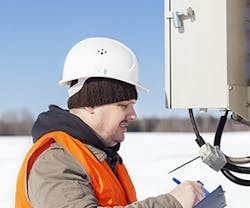Winter Heating Bills Projected to Increase
A majority of U.S. facilities and households can expect higher heating bills this winter compared to last year's time period from October through March, according to EIA's Winter Fuels Outlook. Although the costs will be more, it is important to note that heating expenditures for fuels were especially low last winter when energy prices were low and warm weather reduced heating demand to the lowest level nationally in 25 years. And even though expenditures for nonelectric fuels are expected to increase from last year, expenditures are similar or lower than the average winters from 2010–11 through 2014–15. By comparison, electric heating prices and their associated costs are expected to remain relatively stable.
Winter heating expenditures are a function of expected fuel prices and demand for heating. EIA’s projections of heating demand are based on the most recent temperature forecasts from the National Oceanic and Atmospheric Administration (NOAA), which reflect weather that would be 13% colder than last winter but about 3% warmer than the previous 10-year average.
To read more about the EIA Winter Fuels Outlook, please click here.
